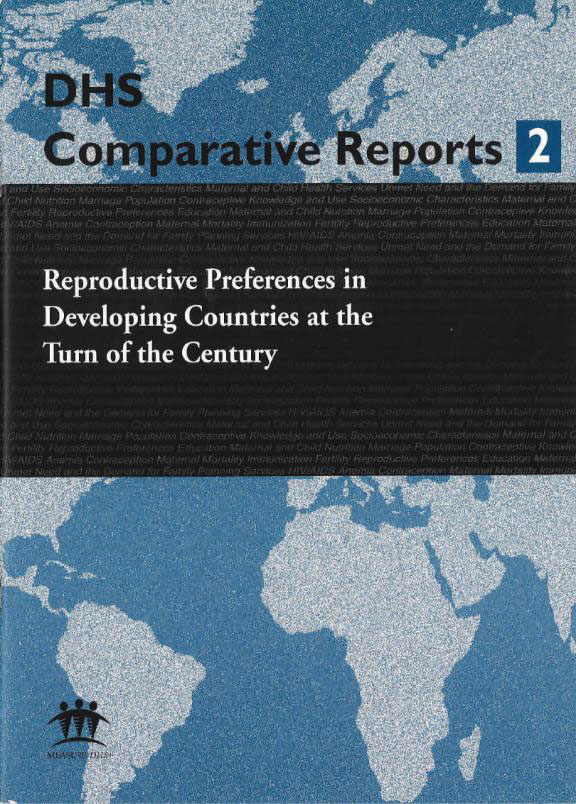- PUBLICATIONS
- JOURNAL ARTICLES
- ACCESS PUBLICATIONS
Publications Summary
- Document Type
- Comparative Reports
- Publication Topic(s)
- Family Planning, Fertility and Fertility Preferences
- Language
- English
- Recommended Citation
- Westoff, Charles F., and Akinrinola Bankole. 2002. Reproductive Preferences in Developing Countries at the Turn of the Century. DHS Comparative Reports No. 2. Calverton, Maryland: ORC Macro.
- Download Citation
- RIS format / Text format / Endnote format
- Publication Date
- April 2002
- Publication ID
- CR2
Download
 Reproductive Preferences in Developing Countries at the Turn of the Century (PDF, 678K)
Reproductive Preferences in Developing Countries at the Turn of the Century (PDF, 678K)
